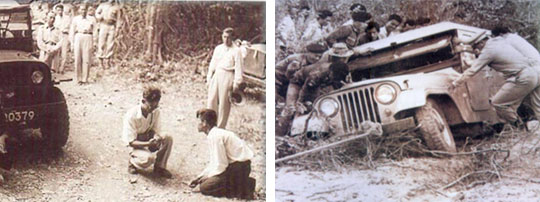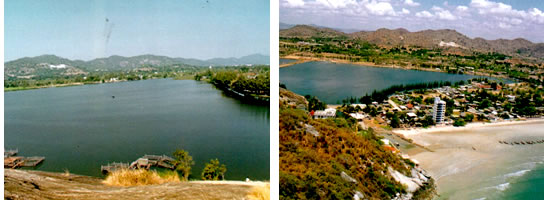At the initial stage of his reign, His Majesty the King's benevolence towards his subjects was mostly shown through the launching of medical and social welfare projects because the country's medical sector at that time was insufficient and the public health services were not widely available like at present.
The initial phase of His Majesty's development works during 1950 to 1962 placed an emphasis on relief of the people's immediate trouble, the implementation of which did not come in the form of a project like the current ones; for example,
In 1950, Cholera epidemic, which remained widespread throughout the country, killed a large number of the infected patients. Accordingly, on April 6, 1950, His Majesty the King consulted with Luang Payung Vejasart, then Director-General of the Department of Public Health, as quoted in an excerpt of his royal statement as follows;
“Mr. Director-General, these days, can Cholera be cured yet? Do we lack any medicines? If needed, I will provide you with them. I would like to see the country's medical affairs progress.”
Later in 1953, His Majesty graciously donated 500,000 Baht from his private funds to construct the “Mahidol Memorial Building” in Saovapha Compound for scientific and medical purposes. In fact, it was aimed particularly to produce B.C.G. vaccine to fight against tuberculosis, which was at that time extensively inflicting the life of the Thai people.

Moreover, His Majesty initiated the production of the films known as “the Private Royal Films” with the purpose of raising funds from donors and film viewers for public welfare activities such as constructing the “Vajiralongkorn Building” in the Thai Red Cross Compound, and constructing the Medical Building at Bhumibol Hospital.
During the Cholera epidemic, saline was desperately needed but the cost of imported saline was too high while the quality of domestic saline was such that patients who received it allegedly went into shock. His Majesty the King then initiated the conduct of study and research as well as advocated the production of a saline refining machine. As a result, the quality of the domestically-produced saline had been upgraded to the same level of international standard.
His Majesty's development work which followed was the Royal Medical Team set up from His Majesty's private funds. The team has been providing mobile medical treatment on the Thai Red Cross Vejapaha barge for the people residing along the banks of the rivers until now.
Since then, His Majesty's benevolence displayed through these activities has become the extension of the country's social welfare philosophy, which instills profoundly in the hearts of the Thai people living in every corner of the country the concepts of mutual popular assistance in the face of hardship.

Immensely concerned with the people's well-being, His Majesty the King, in the early days of his reign, paid constant visits to every region of the country, particularly in remote and underdeveloped rural areas. It can be said that each year His Majesty stays in the provinces more than in Bangkok. During the visits, His Majesty closely interviews the people and officials himself while observing the topographical conditions of the area in order to obtain first-hand data which would Immensely concerned with the people's well-being, His Majesty the King, in the early days of his reign, paid constant visits to every region of the country, particularly in remote and underdeveloped rural areas. It can be said that each year His Majesty stays in the provinces more than in Bangkok. During the visits, His Majesty closely interviews the people and officials himself while observing the topographical conditions of the area in order to obtain first-hand data which would be guidelines for his royal initiatives for the implementation of the Royal Development Projects.e guidelines for his royal initiatives for the implementation of the Royal Development Projects.
The first Royal Development Project began in 1951 when His Majesty the King authorized the Department of Fisheries to acquire the Tilapia mosambica fish from Penang through FAO. The fish were initially raised in the pond at the Ambara Villa. Then on November 7, 1953, His Majesty distributed the Tilapia mosambica fingerlings to village and district leaders throughout the country for propagation and further distribution among the rural people in order to provide them with an alternative source of protein.
The first Royal Development Project which directly emphasized rural development emerged in 1952 when His Majesty the King donated a number of bulldozers to the Naresuan Border Patrol Police Unit for constructing a road leading to Huai Mongkol Village in Hin Lek Fai Subdistrict (presently Thap Tai Subdistrict), Hua Hin District, Prachuap Khiri Khan Province. This was to enable the villagers to easily commute and transport their farm produce for sale in the markets outside the village.
Then in 1953, His Majesty granted an initiative to construct Khao Tao Reservoir in Hua Hin District of Prachuap Khiri Khan Province. The reservoir was the first Royal Development Project concerning irrigation with the intention of helping to relieve drought which has had an adverse effect on the people's livelihood.